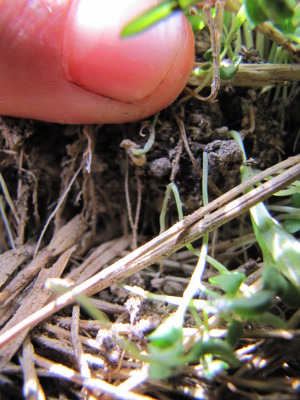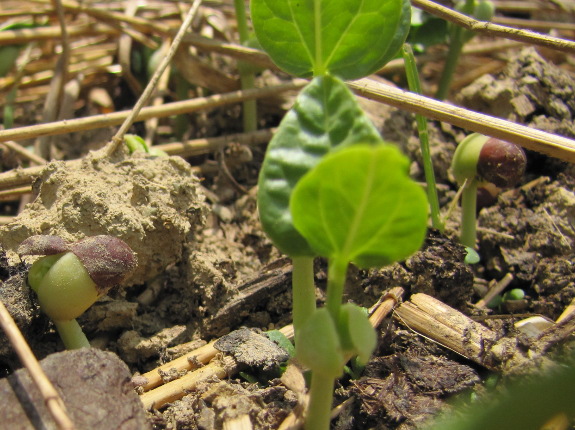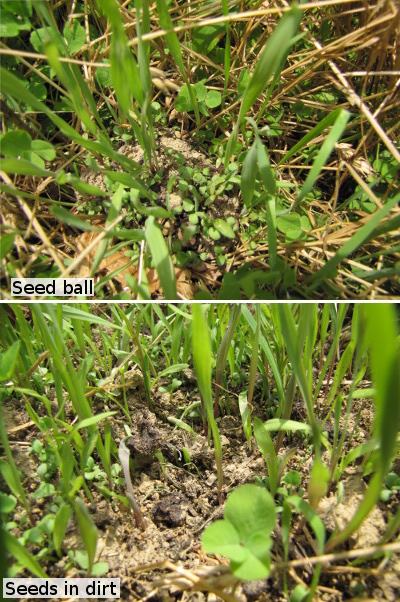
Seed ball growth after 10 days

A week and a half after
"planting", many of my seed
balls have
germinated. In fact, the seedlings have already punched their
roots down out of the seed ball and into the ground below --- essential
if they're going to make it.
I'm excited to see the
seedlings growing so fast, but there are some clear problems with the
method. I tossed the seed balls out during a rainy spell and many
of the seeds germinated only to wither up when hot, dry weather deleted
the moisture from their exposed earth. I can see how smaller seed
balls would have nestled down into the ground and been less prone to
dessication.

 Some of the seeds did much
better than others. The clover
sprouted very well, but the seedlings were also some of the first to
wither when seed
balls dried out, while the grass-like rye and millet seemed to be the
best sprouters and survivors. Cowpeas also did surprisingly well
(since the seeds are large and prone to fall out of the ball), but I
only found two field corn seedlings and one sunflower seedling.
The jury's still out on the slower-germinating amaranth.
Some of the seeds did much
better than others. The clover
sprouted very well, but the seedlings were also some of the first to
wither when seed
balls dried out, while the grass-like rye and millet seemed to be the
best sprouters and survivors. Cowpeas also did surprisingly well
(since the seeds are large and prone to fall out of the ball), but I
only found two field corn seedlings and one sunflower seedling.
The jury's still out on the slower-germinating amaranth.
Finally, I was
interested to compare seed balls to the same mixture that hadn't been
formed into balls and had merely been scattered on the ground
as-is. It's tough to tell with the seedlings so young, but both
methods seem to be about equally effective, making me lean toward the
lower work, non-ball method for future experiments. I'll keep you
posted as my experimental seedlings grow.
Want more in-depth information? Browse through our books.
Or explore more posts by date or by subject.
About us: Anna Hess and Mark Hamilton spent over a decade living self-sufficiently in the mountains of Virginia before moving north to start over from scratch in the foothills of Ohio. They've experimented with permaculture, no-till gardening, trailersteading, home-based microbusinesses and much more, writing about their adventures in both blogs and books.
Want to be notified when new comments are posted on this page? Click on the RSS button after you add a comment to subscribe to the comment feed, or simply check the box beside "email replies to me" while writing your comment.
